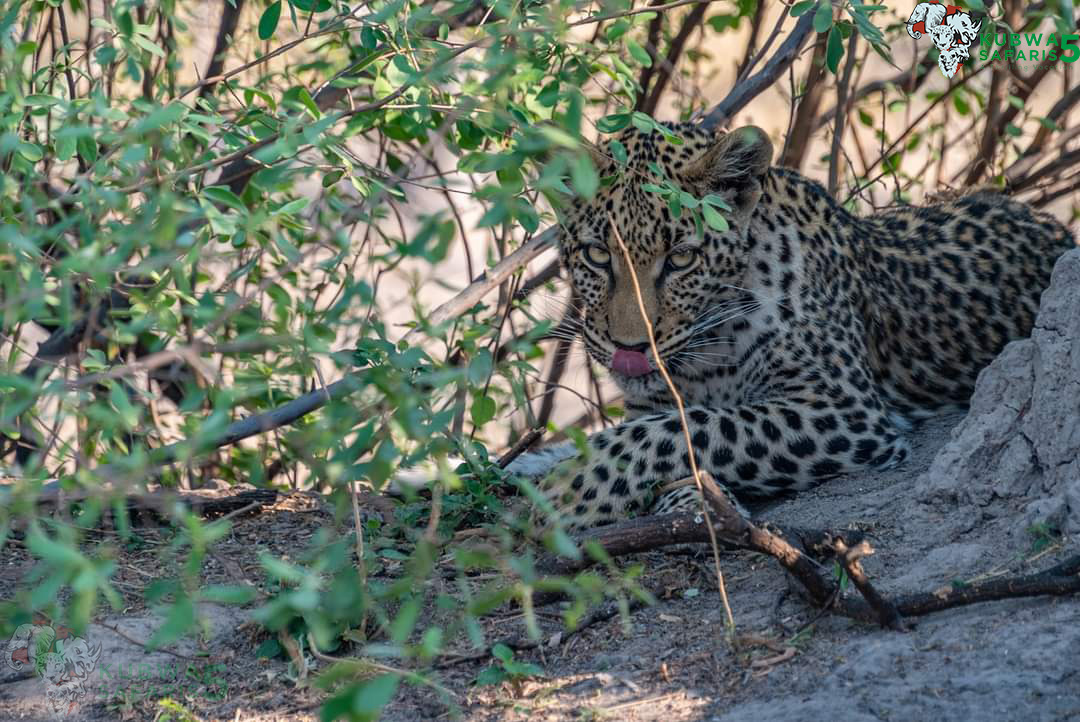Table of Contents
10 Best Reasons To Visit South Luangwa National Park in Zambia
The 10 best reasons to visit South Luangwa National Park in Zambia include; the leopard valley, game drives, wildlife diversity, birding, the carmine bee, nature safaris, game safaris paddling in canoes, photographic safaris, cocktails and entertainment, and a beautiful scenery in South Luangwa National Park.
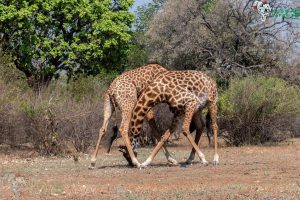
The South Luangwa National Park is a true sanctuary for wildlife, as it is home to over 400 species of birds and 60 species of animals. This part of Zambia draws tens of thousands of tourists every year, including both two-legged and four-legged visitors, so it’s clear that this African oasis isn’t just for the animals to enjoy.
1. The Leopard Valley In South Luangwa National Park
The Luangwa Valley, which is also referred to as the Valley of the Leopard, is home to the continent’s highest leopard population density. Even though seeing a leopard is largely dependent on chance, the chances of doing so in South Luangwa National Park are significantly higher.
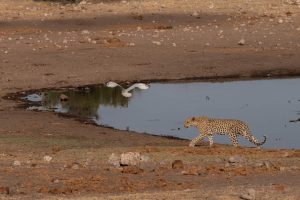
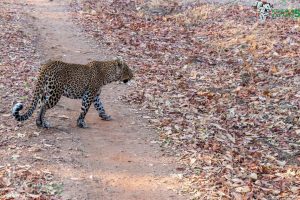
The leopard population in South Luangwa National Park is the world’s densest population of leopards that occurs naturally. Because of this, tour guides can almost always guarantee a personal encounter for each and every one of their clients.
This traditionally elusive and mythical species is always the focus of the treasure hunt on the safari; the fact that the park provides such reliable access is a distinctive advantage for the park.
2. Game Drives In South Luangwa National Park
South Luangwa national park is one of the best national parks in zambia for breathtaking game drives. The ability to go on a night safari is quite unique to Zambia, and it offers an incredible opportunity to look for nocturnal activity, particularly among predators like big cats that come to life after sunset. This is one of the reasons why Zambia is known as the “Land of the Living Night.” Genets, civets, bushy-tailed mongooses, scrub hares, and elephant shrews are just some of the many other species that can be spotted during a night drive that are much less likely to be seen during the day.
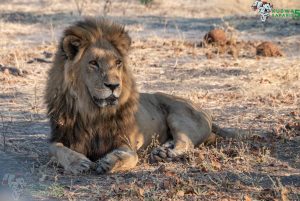
There are very few national parks that permit driving at night, but visitors to South Luangwa National Park are in luck because this park does. When the sun goes down, guests are transported to a completely different era! As night falls, the park is transformed by the appearance of its nocturnal inhabitants. Night safaris are the most effective way to spot the elusive leopard, which is one of the big cats’ species. In addition to this, after a day of rest, lions start to roam around, which puts every other creature on high alert.
There are many people who go on safari throughout the year, but only a select few get to experience the nocturnal world. A game drive in the dark is a unique opportunity. Guests depart for an evening game drive at approximately 4:00 p.m., and as the sun begins to set, they stop for a sundowner or two and watch the sun disappear over the horizon. As the sun sets, the sky lights up – for a brief moment – displaying a mix of rich colors: reds, pinks, oranges, and yellows, before the light fades and the bush becomes pitch black. It’s time to go on an adventure through the dark woods, so turn on the flashlight.
3. Wildlife Diversity In South Luangwa National Park
Because not everyone is interested in birds (although we can guarantee that you will be after visiting South Luangwa), it is fortunate that South Luangwa also has more than 60 species of animals, including four of the big five: the African elephant, the Cape buffalo, the lion, and the leopard. It is said that if you go on three game drives, you will see a leopard, but nothing in the bush is guaranteed; the only thing that is guaranteed is that you will want to experience bush life again!
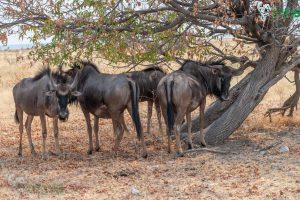
South Luangwa is known for having some of the best guiding available in this region, and it also has some of the highest animal population densities in all of Africa. The park is home to a diverse array of animals, including big game favorites like elephants, buffalo, and hippopotamus in addition to apex predators like the famous African wild dogs, majestic lions, and lean leopards.
This assortment of animals is sure to fulfill the requirements of any safari bucket list. In addition, the South Luangwa National Park is home to Zambia’s well-loved Crawshay’s zebra herds (whose stripes are more distinct than those found further south and west), 14 different species of antelope, including the elusive bushbuck, and the lovely kudu, with its spiral horns and delicate face.
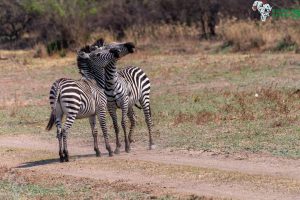
There are three distinct animals here.
Thornicroft’s giraffe, Cookson’s wildebeest, and Crawshay’s zebra are the three endemic animals that can only be found in South Luangwa National Park. These three animals are the only ones of their kind in the entire world.
4. Birding In South Luangwa National Park
Because of the park’s location at an ideal natural crossroads, visitors will have the opportunity to see bird species that are more typically found in either eastern or southern Africa.
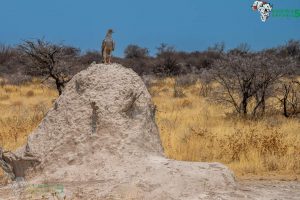
The South Luangwa National Park is home to a spectacular array of avian life throughout the year. Not only does the park encourage the presence of migratory species, but it is also home to a large number of resident bird species. Among the species that live there are the Dickinson’s Kestrel, the Miombo Wren-warbler, the Nyasa Lovebird, and the White-breasted Sunbird.
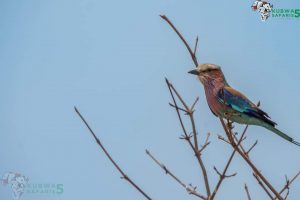
The South Luangwa National Park is home to over 400 different species of birds every year (some sources say over 450 different species), many of which are permanent residents, such as the Dickinson’s Kestrel, the Miombo Wren-Warbler, and the Nyasa Lovebird, while others are winter migrants, such as the carmine bee-eater, the yellow-billed stork, and the African Spoonbill.
5. Nature Safaris In South Luangwa National Park
Have you heard that South Luangwa was the place where the walking safari got its start? During the 1950s, Norman Carr was a pioneer in the field of walking safaris. These days, a good number of the park’s lodges provide opportunities for walking safaris. Their knowledgeable guides lead visitors through the park, bringing them closer to nature and educating them on wildlife that is frequently overlooked on a game drive, such as dung beetles and tortoises.
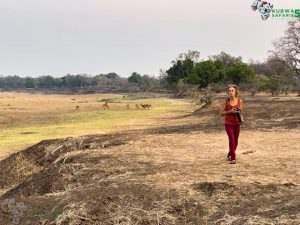
They are able to do this because the guides are well-versed in the park’s history. When people walk among the elephants and antelopes in the park, they not only get a better understanding of the park’s smaller animals, but they also gain a new perspective on the larger animals (from a safe distance, of course).
As a consequence of this, a number of opulent lodges within the park provide guests with the opportunity to go on guided walks through the park during popular viewing times.
When compared to a traditional game drive, a walking safari offers tourists an entirely new perspective on the surrounding environment. The well-being of the guests is of the utmost importance, and safari-goers have the opportunity to observe minute aspects of the local flora, fauna, and insects that would otherwise pass unnoticed.
6. The Carmine Bee In South Luangwa National Park
Every year between the months of September and October, thousands of Carmine-bee eaters make their way to the banks of the Luangwa River in order to dig nests and breed. Grab your binoculars and make your way over to the Carmine Bee-eater Hide at Shenton Safaris for a once-in-a-lifetime opportunity to watch these magnificent birds in action during your birding excursion.
The breeding season brings an influx of thousands of individuals of this stunningly colorful species. Even people who aren’t particularly interested in birds will find the scene of these tiny birds emerging in a flurry of rainbow-hued plumage from their nests along the riverbanks to be utterly enchanted and indescribably magical.
7. Game Safaris Paddling In Canoes In South Luangwa National Park
It is not necessary to have any previous experience in order to go canoeing in South Luanwa National Park; in fact, doing so is both relaxing and enjoyable as you make your way downstream. Every excursion starts with a comprehensive safety briefing and comprehensive instructions, and these journeys are led by experienced river guides.
8. Photographic Safaris in the South Luangwa National Park
South Luangwa is a photographer’s paradise due to the incredible variety of wildlife, dramatic landscapes, and breathtaking sunsets that can be found there.
The Luangwa Valley is both beautiful and rich in resources. Its dazzling beauty is enhanced by the glittering oxbow lakes and verdant, exotic forests that line the Luangwa River, which is one of Africa’s longest river systems that is uninterrupted in its entirety. The length of the valley floor is measured in hundreds of kilometers, and it is at least one kilometer lower than the highlands that are all around it.
The Luangwa region, which can be found at the very end of the Great Rift Valley, is renowned for its natural beauty and abundance of diverse animal life. Because of its remote location, the northern section is only accessible by a select few guides. The southern region features an unspoiled wilderness that is gradually gaining popularity as a destination for safaris. The authentic walking safari can be experienced in this location.
9. Cocktails And Entertainments South In Luangwa National Park
A sundowner is an essential part of any safari, and there is no better place to enjoy one than on the banks of the Luangwa river, which is teeming with wildlife. Along the banks of the Luangwa River, you might enjoy sipping your preferred beverage while observing hippos, crocodiles, and elephants coexisting peacefully.
10. A beautiful scenery In South Luangwa National Park
South Luangwa is widely considered to be one of the most beautiful and untouched regions in all of Africa.
Its primary habitats are woodlands comprised of miombo and mopane, as well as seasonal floodplains and oxbow lagoons. The South Luangwa National Park has an abundance of waterways and lush vegetation, in addition to a tropical climate that is relatively mild, making it an ideal place for life to flourish.
When To Visit South Luangwa National Park
The South Luangwa National Park is accessible all year round thanks to its all-weather gravel roads. Learn how wildlife adjusts to its shifting environment by doing some exploration of the changing seasons, which are characterized by distinct shifts in the colors, sounds, and smells of the environment.
The months of July to October are ideal for wildlife viewing. Because it is the middle and end of the Dry season, and the water in the bush has dried up, animals congregate around rivers and watercourses. However, October is extremely hot, and some people may struggle to cope with the conditions.
The Best Time
- From July to October (The bush is dry and animals are easy to find)
Peak Season
- July to October (high-season rates apply in Mfuwe, South Luangwa’s main town).
- Off Season
From November to May (Many lodges close during part of the Wet season; low-season rates apply)
Weather is best from April to August (It is cooler and it hardly ever rains)
Worst weather occurs from October to March (Hot and wet weather)
Dry Season: May to October
- Animals congregate around the river, and the vegetation thins – prime wildlife viewing season.
- There is a lot of sunshine and no rain.
- Fewer mosquitos equals lower malaria risk.
- The Mfuwe area, where most lodges are located, becomes very crowded.
- From July to October, high-season rates apply.
The sky is hazy, and the bush appears parched.
October is scorching.
November to April -Wet Season
- This is the ‘Emerald season,’ so the scenery is lush and the sky is clear.
- There are fewer tourists and the rates are lower.
- When there are migrants present, this is the best time to go birding.
- There are numerous newborn animals.
- The dry season is ideal for wildlife viewing.
- It is extremely hot and humid.
From December to March, many lodges close because malaria is a greater concern than during the dry season.
Some roads become difficult, if not impassable, to drive on.
How To Access South Luangwa National Park In Zambia
The roads that lead to South Luangwa National Park are kept in good condition, and those who are traveling independently can restock their supplies in Chipata before continuing on to Mfuwe. Although the roads in the park are not paved, they have been compacted and are kept in excellent condition. However, if you want to get to South Luangwa as quickly as possible, you should look into flights with Proflight Zambia. These flights connect Mfuwe with Johannesburg by way of Lusaka, the capital of Zambia.
Where To Sleep
There best 4 safari lodges in South Luangwa National Park in Zambia are here to provide you with luxury, mid-range and budget accommodation from which you can choose.
This blogs addresses the following question;
- What is South Luangwa national park famous for?
- Can you self drive in South Luangwa?
- How big is the Luangwa Valley?
- Where is Luangwa Africa?

